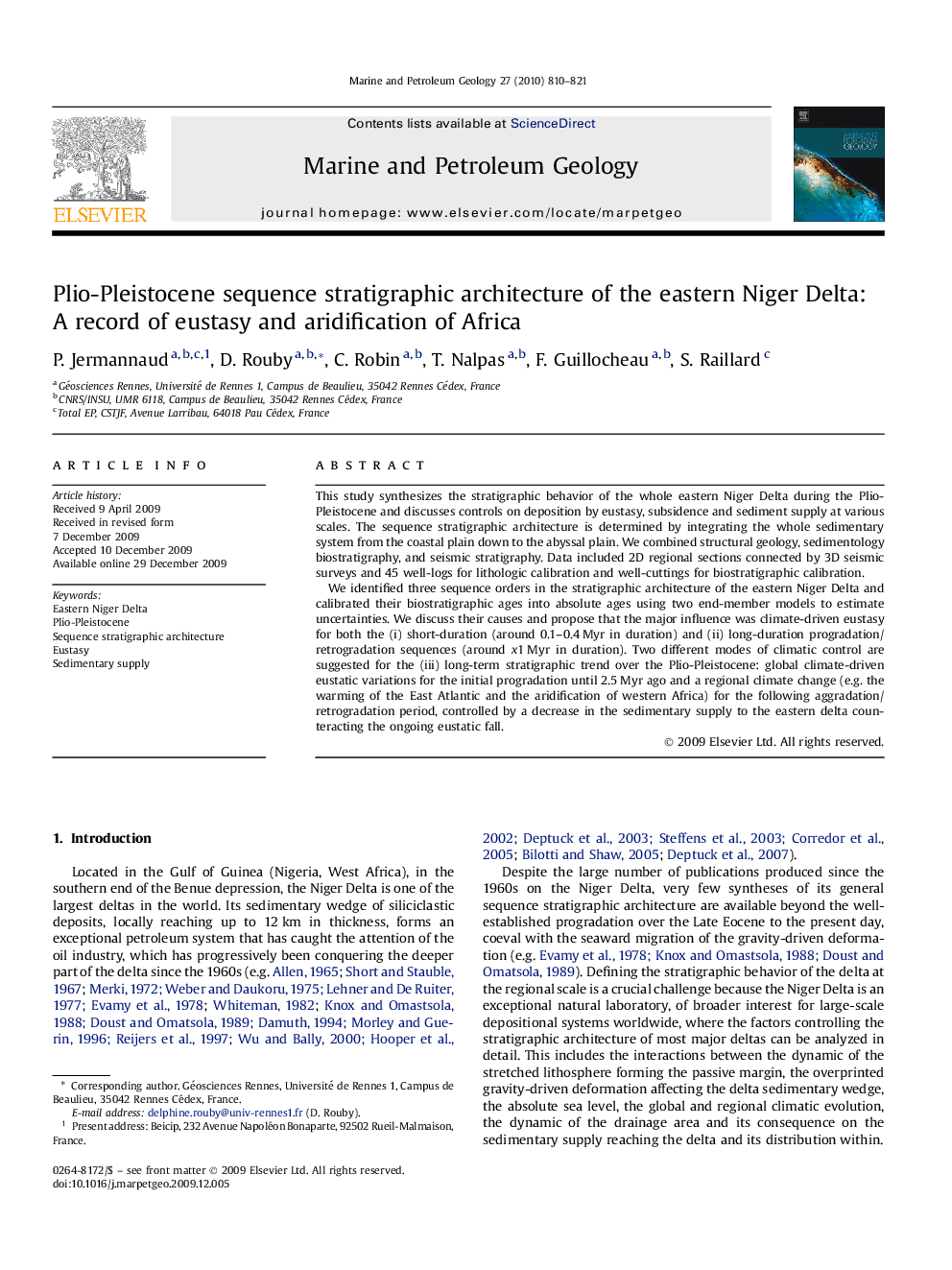| Article ID | Journal | Published Year | Pages | File Type |
|---|---|---|---|---|
| 4696316 | Marine and Petroleum Geology | 2010 | 12 Pages |
This study synthesizes the stratigraphic behavior of the whole eastern Niger Delta during the Plio-Pleistocene and discusses controls on deposition by eustasy, subsidence and sediment supply at various scales. The sequence stratigraphic architecture is determined by integrating the whole sedimentary system from the coastal plain down to the abyssal plain. We combined structural geology, sedimentology biostratigraphy, and seismic stratigraphy. Data included 2D regional sections connected by 3D seismic surveys and 45 well-logs for lithologic calibration and well-cuttings for biostratigraphic calibration.We identified three sequence orders in the stratigraphic architecture of the eastern Niger Delta and calibrated their biostratigraphic ages into absolute ages using two end-member models to estimate uncertainties. We discuss their causes and propose that the major influence was climate-driven eustasy for both the (i) short-duration (around 0.1–0.4 Myr in duration) and (ii) long-duration progradation/retrogradation sequences (around x1 Myr in duration). Two different modes of climatic control are suggested for the (iii) long-term stratigraphic trend over the Plio-Pleistocene: global climate-driven eustatic variations for the initial progradation until 2.5 Myr ago and a regional climate change (e.g. the warming of the East Atlantic and the aridification of western Africa) for the following aggradation/retrogradation period, controlled by a decrease in the sedimentary supply to the eastern delta counteracting the ongoing eustatic fall.
